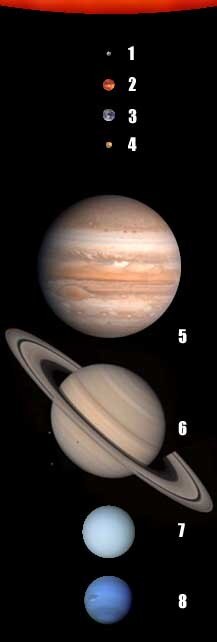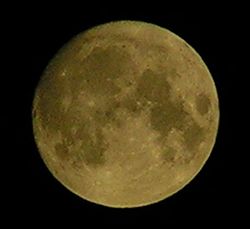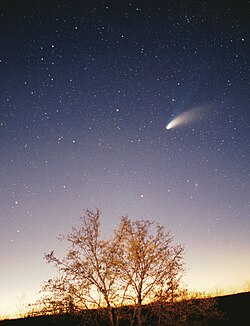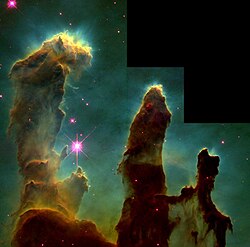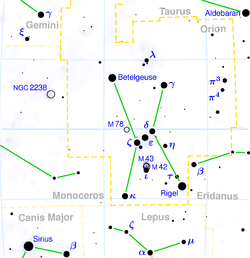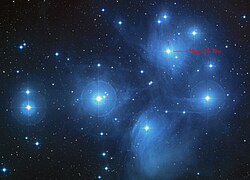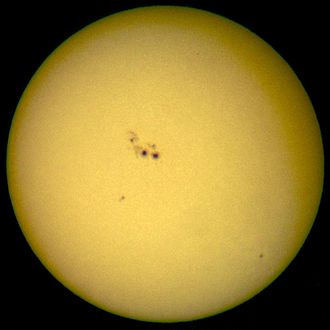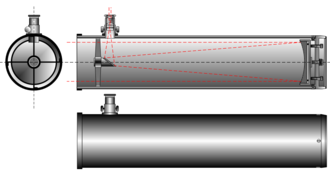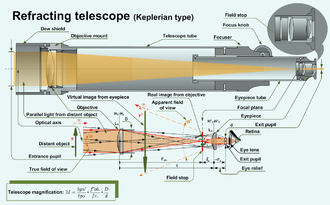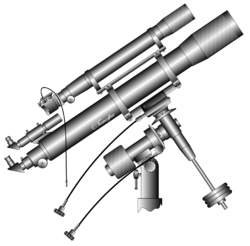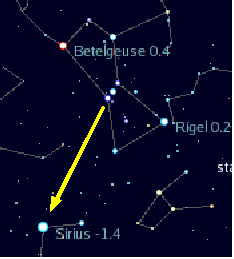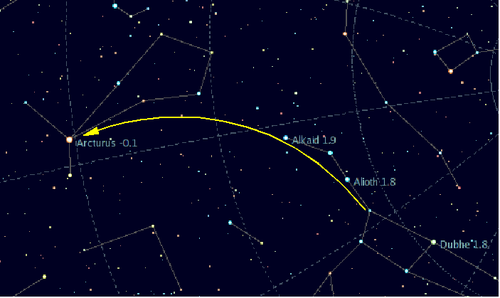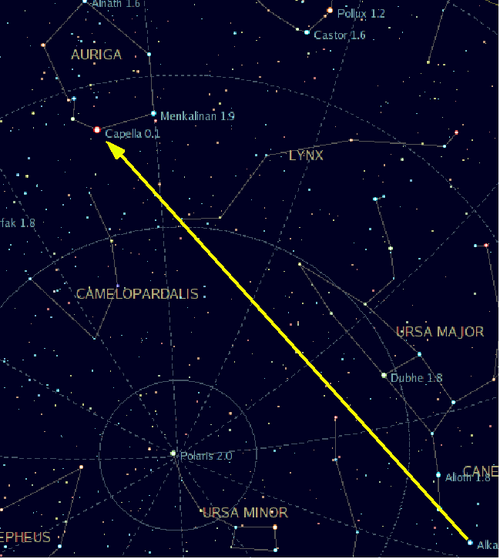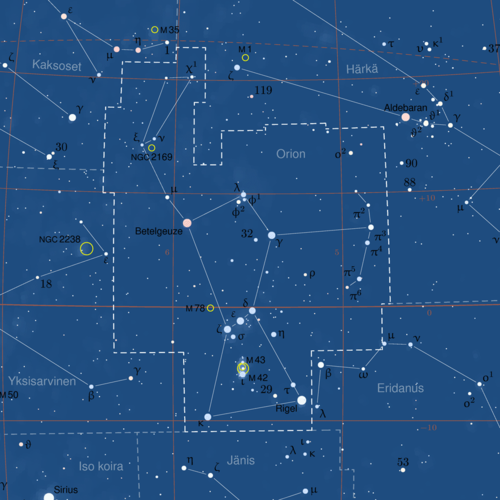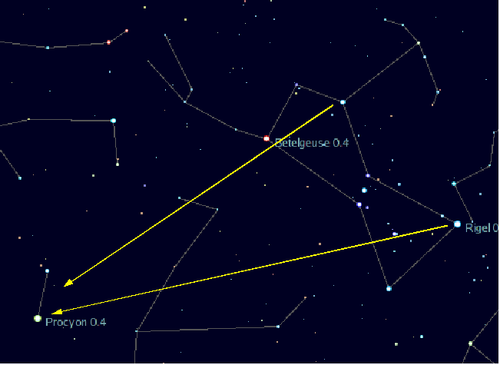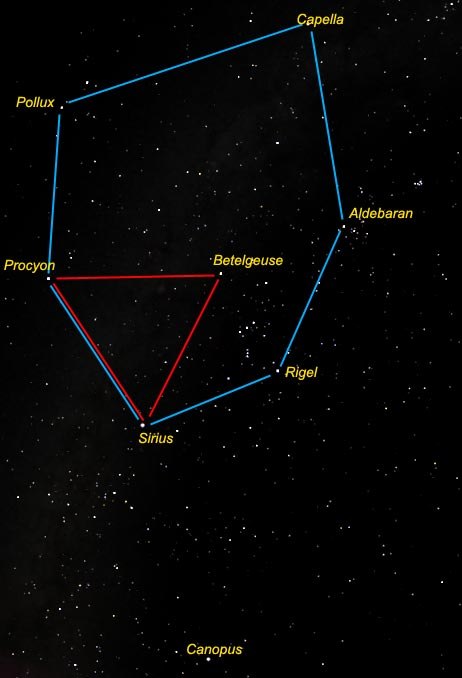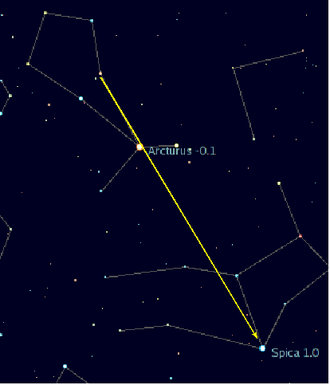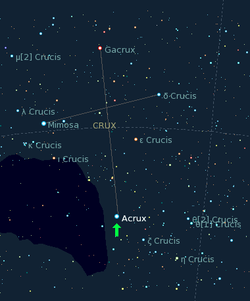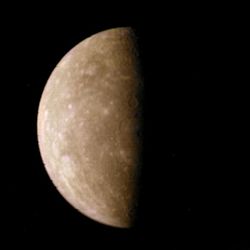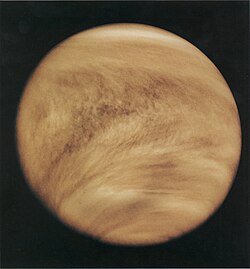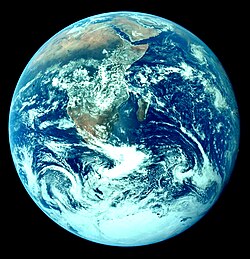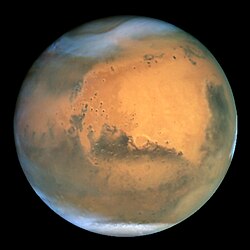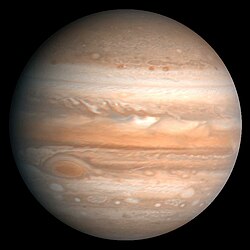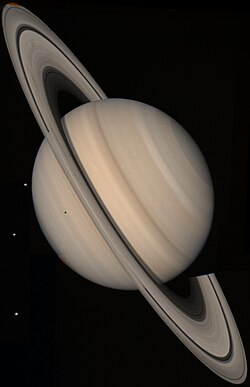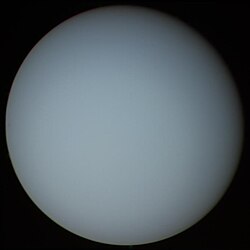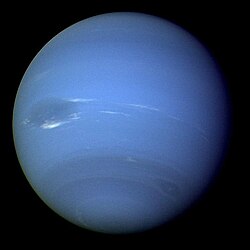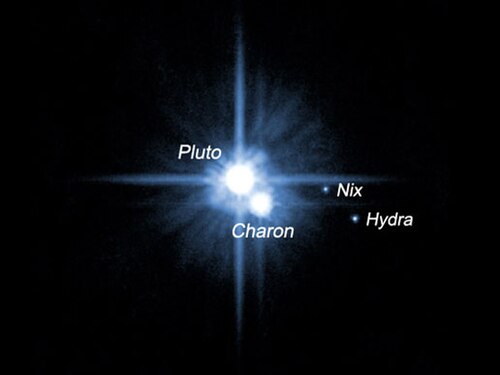Difference between revisions of "AY Honors/Stars - Advanced"
Jomegat bot (talk | contribs) (Bot: Automated import of articles) |
|||
| Line 20: | Line 20: | ||
The most challenging requirement of this honor is probably this: | The most challenging requirement of this honor is probably this: | ||
| − | <b>{{reqreq|page={{PAGENAME}}|num= | + | <b>{{reqreq|page={{PAGENAME}}|num=13}}</b> |
</translate> | </translate> | ||
Revision as of 03:48, 26 December 2020
Overview
The Challenging Part
The most challenging requirement of this honor is probably this:
13. Locate the 15 first-magnitude stars as they appear throughout the year.
[[AY Honors/Stars - Advanced/Requirements|Tab Name/Printable Version]]
1. Have the Stars Honor.
2. How can you account for the apparent daily motion of the stars?
3. What are each of the following.
- a. Planet
- b. Satellite
- c. Comet
- d. Meteor
- e. Nebula
- f. Constellation
- g. Fixed star
- h. Sunspot
4. What is meant by the terms:
- a. Celestial sphere
- b. Celestial pole
- c. Celestial equator
- d. Horizon
- e. Right ascension
- f. Declination
- g. Transit
- h. Conjunction
- i. Ecliptic
5. Explain the major difference between a refractor and reflector type of telescope. Describe an equatorial telescope mounting.
6. Into what colors is sunlight dispersed when passed through a prism? In what way are colors of stars used to indicate their temperature?
7. What connection is there between the ecliptic and the vernal and autumnal equinoxes? What dates are usually associated with the equinoxes?
8. Learn the 12 constellations called the signs of the zodiac. Know the history of the signs of the zodiac.
9. Identify by their name and point out in the sky the constellations that can be seen all night long on a clear night in your hemisphere.
10. Name five constellations that are visible between sunset and midnight in your hemisphere during:
- a. The summer months.
- b. The winter months.
11. At what time of year is the constellation Orion best seen? Locate and identify in the sky the three brightest stars of this constellation.
12. How are the letters of the Greek alphabet used to name stars in a constellation? Give five illustrations of the use of the letters of the Greek alphabet in naming the stars of a constellation.
13. Locate the 15 first-magnitude stars as they appear throughout the year.
14. With the use of a diagram, show the relative positions of the earth and moon during high and low tides.
15. Describe the peculiar individual characteristics of the planets in our solar system. Which ones cannot be seen without the aid of a telescope? Which two planets are seen only near the hours of sunrise or sunset?
16. Where and in what way does the Bible refer to Orion, the Pleiades, and Arcturus?
17. Discuss the statement made by Ellen G. White in Early Writings, page 41, concerning the opening in Orion.
Printable Answer Key Tab Name/Edit Answer Key
1
For tips and instruction see Stars.
2
The stars appear to move in two different ways. The first way is caused by the Earth's rotation on its axis which causes the stars (and the Sun and the Moon) to rise in the east and set in the west. The second way stars appear to move is caused by the Earth's orbit around the sun, which causes any given star to rise earlier and earlier each night.
3
3a
The short answer: A planet is a large body that orbits a star, and dominates the vicinity of its orbit.
The long answer: Believe it or not, until 2006 there was no formal scientific definition of the word planet. Most of us have been taught that there are nine planets: Mercury, Venus, Earth, Mars, Jupiter, Saturn, Uranus, Neptune, and Pluto. The asteroids were at one time also considered to be planets, but scientists soon realized that they were different - there were lots and lots of them, and they were all in the same general region of the solar system, sharing orbits between Mars and Jupiter. Pluto was not discovered until 1930, and it was soon heralded as the ninth planet. But technology improved, and scientists began to discover that there were lots of other bodies a lot like Pluto in that same region of the solar system (called the Kuiper Belt). It eventually became obvious that Pluto should never have been called a planet, but by the time that happened, Pluto was entrenched. Popular culture would not allow scientists to "demote" Pluto to non-planetary status. So scientists left it alone. After all, none of the other Kuiper Belt Objects (or KBO's) were as large as Pluto, so the problem could be ignored.
In 2005 an object named Eris was discovered in the Kuiper Belt beyond the orbit of Pluto. It was originally thought to be slightly larger than Pluto, but is now known to be slightly smaller (though it has more mass). The discovery of Eris forced the scientific community to come up with a formal definition of the word "planet," and that definition corrected the misclassification of Pluto as a planet.
3b
A satellite is an object that orbits a planet. There are two basic types of satellites: natural, and artificial. Our Moon is a natural satellite, and all the planets beyond Earth's orbit have them as well (we keep discovering more and more of them, so it's hard to put a number on it). The other type of satellite is an artificial satellite, and these are most often used for communications (think satellite TV dishes).
3c
A comet is a small body in the solar system that orbits the Sun and (at least occasionally) exhibits a coma (or atmosphere) and/or a tail — both due primarily to the effects of solar radiation upon the comet's nucleus, which itself is a minor planet composed of rock, dust, and ices.
Comets have highly elliptical orbits; they come very close to the sun (within the orbit of Mercury), and then they go way out to the edges of the solar system, far beyond even the orbit of Pluto. Because they travel over such a huge distance, it takes them many years to complete an orbit.
3d
A meteor is the visible path of a meteoroid that enters the Earth's (or another body's) atmosphere, commonly called a shooting star or falling star.
Meteors look a lot like comets in photographs but can easily be distinguished from them because a comet's motion can only be discerned by observing it for several hours, while a meteor's motion is immediately obvious (they are very fast and brief). An individual meteor can only be seen for at most a few seconds while a comet can be seen for days or weeks.
3e
A nebula is an interstellar cloud of dust, gas and plasma. Interstellar is a word meaning "between or among the stars." Nebulae are among the most beautiful objects in the night sky. Perhaps one of the most famous and easily recognized space objects, the Eagle Nebula (also known as Messier Object 16, M16 or NGC 6611) is a young open cluster of stars in the constellation Serpens.
3f
A constellation is any one of the 88 areas into which the sky - or the celestial sphere - is divided. The term is also often used less formally to denote a group of stars visibly related to each other in a particular configuration or pattern.
Some well-known constellations contain striking and familiar patterns of bright stars. Examples are Ursa Major (containing the Big Dipper), and Orion (containing a figure of a hunter). Other constellations do not encompass any discernible star patterns, and contain only faint stars.
3g
A fixed star (from the Latin stellae fixae) is any celestial object that does not seem to move in relation to the other stars of the night sky. Hence, a fixed star is any star except for the Sun. A nebula or other star-like object may also be called a fixed star.
3h
A sunspot is a region on the Sun's surface that is marked by a lower temperature than its surroundings and intense magnetic activity, forming areas of low surface temperature. Although they are blindingly bright, at temperatures of roughly 4000-4500° K, the contrast with the surrounding material at some 5700° K leaves them clearly visible as dark spots. If they were isolated from the surrounding photosphere they would be brighter than an electric arc.
4
4a
The celestial sphere is an imaginary rotating sphere of "gigantic radius", with the Earth at its center. All objects in the sky can be thought of as lying upon the sphere.
4b
The two celestial poles are the imaginary points where the Earth's spin axis intersects the celestial sphere. The north celestial pole currently has nearly the same coordinates as the bright star Polaris (which is Latin for "Pole Star").
4c
The celestial equator is a great circle on the imaginary celestial sphere, which is actually the plane of the terrestrial equator extended out into the universe (i.e., it could be constructed by extrapolating the Earth's equator until it touches the celestial sphere).
4d
The horizon is the line that separates earth from sky.
4e
Right Ascension is the astronomical term for one of the two coordinates of a point on the celestial sphere when using the equatorial coordinate system. It is equivalent to terrestrial longitude.
4f
Declination is one of the two coordinates of the equatorial coordinate system, the other being either right ascension or hour angle. Dec is comparable to latitude, projected unto the celestial sphere, and is measured in degrees north and south of the celestial equator. Therefore, points north of the celestial equator have positive declination, while those to the south have negative declination.
4g
A transit is the astronomical event that occurs when one celestial body appears to move across the face of another celestial body, as seen by an observer at some particular vantage point.
4h
Conjunction means that, as seen from some place (usually the Earth), two celestial bodies appear near one another in the sky.
4i
The Ecliptic is the apparent path of the Sun traced out along the sky in the course of the year. More accurately, it is the intersection of the celestial sphere with the ecliptic plane, which is the geometric plane containing the mean orbit of the Earth around the Sun.
5
A refractor telescope is a type of optical telescope that refracts or bends light at each end using lenses.
A reflector telescope is a telescope which uses a combination of curved and flat mirrors to reflect light and form an image, rather than lenses to refract or bend light to form an image.
An equatorial mount is a mount used for moving a telescope or camera along two perpendicular axes of motion (right ascension and declination). The telescope mount's axis of right ascension should be pointed directly towards whichever celestial pole is above the horizon to work correctly.
6
When sunlight is passed through a prism, it is dispersed into the colors of the rainbow. In fact, when you see a rainbow after a rain storm, it too is made by sunlight passing through many tiny prisms - the raindrops.
Careful study of these rainbows reveals that there are gaps between some of the colors. These gaps are called absorption lines, and depending on where they are in the spectrum (that is, where they are in the rainbow), scientists can tell what the light source is made of. Scientists also discovered that the temperature of a star is determined by its composition. So by observing the spectrum, scientists can tell the temperature of a star.
7
The ecliptic is the path followed by the sun across the celestial sphere during the year. It crosses the celestial equator twice during the year, once at the Autumnal equinox and once at the Vernal equinox. The Vernal Equinox occurs on either March 20 or March 21. The Autumnal Equinox occurs on either September 22 or 23.
8
By 2,000 BC, the Egyptians and Mesopatamians marked the seasons by the constellations we now call Taurus, Leo, Scorpio and Aquarius. The division of the ecliptic into the zodiacal signs originates in Babylonian ("Chaldean") astronomy in the early to mid 1st millennium BC (likely during Median/"Neo-Babylonian" times).
The signs were named after the nearby constellations at the time of Ptolemy, most of which were named after animals, hence the term zodiac (from Greek zodiakos, "circle of little animals").
- ♈ Aries 0° (vernal equinox)
- ♉ Taurus 30°
- ♊ Gemini 60°
- ♋ Cancer 90° (summer solstice)
- ♌ Leo 120°
- ♍ Virgo 150°
- ♎ Libra 180° (autumnal equinox)
- ♏ Scorpius 210°
- ♐ Sagittarius 240°
- ♑ Capricornus 270° (winter solstice)
- ♒ Aquarius 300°
- ♓ Pisces 330°
9
The constellations that can be seen all night in each hemisphere are the ones near the celestial poles.
Northern Hemisphere:
- Ursa Minor
- Ursa Major
- Draco
- Cepheus
Southern Hemisphere:
- Octans
- Mensa
- Hydrus
- Chameleon
- Volans
- Pavo
- Musca
10
10a
Northern Hemisphere:
In the east you should be able to find Cygnus (the Northern Cross) and Aquila. Directly overhead you should see Lyra. To the west you should be able to find Virgo, Leo, and Bootes.
Southern Hemisphere: In the east you should be able to find Aquila, Capricorn, and Sagitarius. Directly overhead you should see Scorpius. To the southwest you should be able to find Crux (the Southern Cross) and Centaurus.
10b
Northern Hemisphere: To the south you should be able to see Orion, Canis Major, Canis Minor, Gemini, and Auriga.
Southern Hemisphere: In the east you should be able to find Canis Major, and Canis Minor. In the north you should see Orion. To the west you should be able to find Cetus and Fornax.
11
Orion is best seen in the winter because it is then visible just after sunset, and throughout most of the night. In the Northern Hemisphere the winter sky is generally clearer than the summer sky. The three brightest stars in Orion are Rigel (right foot), Betelguese (left shoulder), and Bellatrix (right shoulder).
12
The brightest star in a constellation is called alpha plus the constellation name. The second brightest is named beta, the third brightest is named gamma, and so forth. The best known example of this is Alpha Centauri which is the brightest star in the constellation Centaur. However, Alpha Centauri is actually a binary star, so the first two stars in our list can be Alpha Centauri A, and Alpha Centauri B. Acrux, Becrux, and Gacrux are the three brightest stars in Crux, the Southern Cross, and are so named as an abbreviation of Alpha-Crux, Beta-Crux, and Gamma-Crux.
13
| Note: The editors of this answer book feel that there is an error in the official version of this requirement. More Information This requirement cannot be met as it is written unless the Pathfinder is lucky enough to be able to travel to both the Northern and Southern Hemispheres or into the tropics. Many Southern Hemisphere stars are visible south of the Tropic of Cancer, so if you happen to be planning a vacation (or a mission trip) to the Virgin Islands, look for the five first magnitude stars in the Southern Hemisphere.
|
First-magnitude stars in the Northern Hemisphere
Sirius
Sirius is the brightest star in the night-time sky, with a visual apparent magnitude of −1.46. It is located in the constellation Canis Major. As the major star of the "Big Dog" constellation, it is often called the "Dog Star". Sirius can be seen from every inhabited region of the Earth's surface. At a distance of 2.6 pc or 8.57 light years, Sirius is also one of the nearest stars to Earth. The best time of year to view it is around January 1, when it reaches the meridian at midnight. Sirius can be found by following Orion's belt from the viewer's right to left.
Arcturus
Arcturus is the brightest star in the constellation Boötes, and the third brightest star in the night sky, with a visual magnitude of −0.05, after Sirius and Canopus. Arcturus can be found by following the arc made by handle of the Big Dipper (away from the dipper's bowl).
Vega and Altair
Vega is the brightest star in Lyra, and the fifth brightest star in the sky. It is the third brightest star in the Northern night sky, after Sirius and Arcturus, and can often be seen near the zenith in the mid-northern latitudes during the Northern Hemisphere summer.
Vega is a vertex of the Summer Triangle, which consists of Vega (in Lyra), Deneb (in Cygnus) and Altair (in Aquila). If one is to consider this asterism a right triangle, then Vega would correspond to its right angle. This triangle is very recognizable in the northern skies for there are few bright stars in its vicinity.
Altair is the brightest star in the constellation Aquila and the twelfth brightest star in the nighttime sky, at visual magnitude 0.77. Like Vega, it is a member of the Summer Triangle.
Capella
Capella is the brightest star in the constellation Auriga and sixth brightest star in the sky. Although it appears as a single point to the naked eye, Capella is actually a bright close binary pair of stars along side a second, fainter binary. Capella can be found by following the line made by the two stars in the Big Dipper's handle and extending it across the Dipper's bowl.
Rigel and Betelguese
Rigel is the brightest star in the constellation Orion and the seventh brightest star in the sky, with visual magnitude 0.12. Rigel is Orion's left foot.
Betelguese is the second brightest star in the constellation Orion, and the tenth brightest star in the night sky. Betelguese is Orion's right shoulder. Betelgeuse is a red supergiant, one of the physically largest stars known. If it were placed at the center of our solar system, its outer surface would possibly extend to the orbit of Mars.
Procyon
Procyon is the brightest star in the constellation Canis Minor and the eighth brightest star in the nighttime sky. It can be found using stars in Orion in two different ways:
- By following Orion's left foot (Rigel) through the tip of his sword.
- By following Bellatrix (his left shoulder) through Betelguese (his right shoulder).
Procyon, Sirius, and Betelguese also form an equilateral triangle.
Aldebaran
Once you can find Rigel, Sirius, Procyon, and Capella, finding Aldebaran is easy, for these five stars, plus Pollux make up the Winter Circle.
Spica
Spica is the brightest star in the constellation Virgo, and the 15th brightest star in the sky. It can be found by following a line starting at the star ρ Boötis, and continuing through Arcturus to Spica.
First-magnitude stars in the Southern Hemisphere
Canopus
Canopus is the brightest star in the southern constellation of Carina, and the second brightest star in the sky, with a visual magnitude of −0.62, second only to Sirius. Canopus is a yellowish-white supergiant star. It is located well into the southern hemisphere, at a declination of −52° 42' (2000) and a right ascension of 06h24.0m, and is visible on the southern horizon of even the southern US States as far north as Virginia or Kentucky. That far north, it can only be seen on a very clear night during the last two weeks of February directly south very low on the horizon just after sunset.
Alpha Centauri A and Hadar
Alpha Centauri A is located in the Southern Hemisphere, and can only be seen in the United States from points south of Daytona Beach, Florida or San Antonio, Texas. Even then, it barely rises above the horizon directly to the South for a few days around July 8.
Hadar is also known as Beta Centauri, for it is the second brightest star in the constellation Centaurus. It is just to the West of Alpha Centauri A, so if you can see the one, you can probably see the other.
Achernar
Achernar is located in the Southern Hemisphere, and therefore is never visible in most of North America. It can be seen from Dallas Texas and points south in mid to late November due South, and very low on the horizon.
Acrux
Acrux is the brightest star in constellation Crux (the Southern Cross) and the thirteenth brightest star in the nighttime sky, at visual magnitude 0.77. Acrux is represented in the flag of Australia as one of the 5 stars that comprise the Southern Cross. Since Acrux is at roughly −60° declination, it is generally only visible south of the Tropic of Cancer and therefore didn't receive an ancient traditional name; "Acrux" is simply a combination of the A in Alpha plus Crux (meaning "cross"). Acrux is the southernmost first magnitude star, just a bit more southerly than Alpha Centauri. Acrux can be seen as far north as Miami, Florida, but it only barely rises above the horizon. You might be able to see it due south around May 8 (any year) at about 9:00 pm. If you wait a around until midnight, Alpha Centauri and Hadar will also be visible around that date as well (also directly to the south and just over the horizon).
14

Since the Earth's crust is solid, it moves, along with everything inside it, as one whole, as defined by the average force on it. For the Earth's shape this average force is equal to the force on its center. The water at the surface is free to move following forces on its particles. One of the forces that effect tides is the gravity of the Moon. The force of gravity gets weaker as the distance between two bodies increases, and since the center of the Earth is farther away than the surface nearest the Moon, the Moon's gravity pulls on the surface water stronger than it pulls on the whole of the Earth. This causes the water level to rise and causes a high tide.
Meanwhile, on the side of the Earth opposite the Moon, the surface is farther than the Earth's center, so the Moon pulls more strongly on the Earth as a whole than it does on the water. This causes the water move away from the Moon, but since this is on the other side of the Earth, the water level still rises, causing a high tide.
Low tides occur at the points on the Earth where the Moon is just rising or just setting - that is, where the surface is at a 90° angle from the moon.
The Sun also had a tidal effect, but since it is much farther away, the difference between the pull of gravity at the surface of the Earth and the pull of gravity at the center is much smaller as compared to the Moon. When the tidal action caused by the Sun and Moon reinforce one another we have a spring tide (which is higher than normal). When they oppose one another, we have a neap tide (which is lower than normal).
15
Uranus and Neptune cannot be seen with the naked eye. Mercury and Venus are only seen near the hours of sunrise and sunset because they are closer to the Sun than the Earth.
Mercury
Mercury is the planet closest to the Sun. It orbits the Sun once every 88 Earth-days. Mercury has very little atmosphere because its gravity is so weak due to its small size. Like the Moon, Mercury's lack of an atmosphere means that it is struck often by other bodies, leaving its surface cratered. If it had a thicker atmosphere, these objects would burn up before they reached the surface. Another similarity between Mercury and the Moon is that Mercury's day is equal to its year at 88 days.
Venus
Venus is the second-closest planet to the Sun, orbiting it every 224.7 Earth days. After Earth's Moon, it is the brightest object in the night sky. Venus is one of the four terrestrial planets, meaning that, like the Earth, it is a rocky body. In size and mass, it is very similar to the Earth, and is often described as its 'twin'. The diameter of Venus is only 650 km less than the Earth's, and its mass is 80% of the Earth's. However, conditions on the Venusian surface differ radically from those on Earth, due to its dense carbon dioxide atmosphere. The enormously CO2-rich atmosphere generates a strong greenhouse effect that raises the surface temperature to over 400 °C. This makes Venus' surface hotter than Mercury's, even though Venus is nearly twice as distant from the Sun and receives only 25% of the solar irradiance.
Earth
Earth is the only planet in the Solar System that supports life. Its atmosphere protects the Earth's life forms by absorbing ultraviolet solar radiation, moderating temperature extremes, transporting water vapor, and providing useful gases. The atmosphere is also one of the principal components in determining the weather and climate of the Earth.
Mars
Mars is the fourth planet from the Sun in our solar system. Mars is also known as "The Red Planet" due to the reddish appearance it has when seen from Earth at night. Mars has two moons, Phobos and Deimos, which are small and oddly-shaped and are possibly captured asteroids. Until the first flyby of Mars by Mariner 4 in 1965, it was thought that Mars had channels of liquid water. We now know that these channels do not exist. Still, of any planet in our solar system after the Earth, Mars is the most likely to harbor liquid water. It is the only planet besides Earth that has seasons. It also has a rotational period nearly the same as our own. It has the highest mountain in the solar system, Olympus Mons, the largest canyon in the solar system, Valles Marineris, and polar ice caps. Water was discovered on Mars in 2015.
Jupiter
Jupiter is the fifth planet from the Sun and by far the largest within the solar system. Jupiter is usually the fourth brightest object in the sky (after the Sun, the Moon and Venus); however at times Mars appears brighter than Jupiter. Jupiter is 2.5 times more massive than all the other planets combined. Jupiter also has the fastest rotation rate of any planet within the solar system, making a complete rotation on its axis in slightly less than ten hours, which results in an equatorial bulge easily seen through an Earth-based amateur telescope. Jupiter is perpetually covered with a layer of clouds, and it may not have any solid surface in that the density may simply increase gradually as you move towards the core. Its best known feature is the Great Red Spot, a storm larger than Earth.
Saturn
Saturn is the sixth planet from the Sun. It is a gas giant (also known as a Jovian planet, after the planet Jupiter), the second-largest planet in the solar system after Jupiter. Saturn is probably best known for its planetary rings, which make it one of the most visually remarkable objects in the solar system. Saturn is the only one of the Solar System's planets less dense than water, with an average specific density of 0.69. This means that Saturn would float if you had a large enough body of water to place it in. Like Jupiter, it radiates more energy into space than it receives from the Sun.
Saturn has a large number of moons. The precise figure is uncertain as the orbiting chunks of ice in Saturn's rings are all technically moons, and it is difficult to draw a distinction between a large ring particle and a tiny moon. Seven of the moons are massive enough to have collapsed into a spheroid under their own gravitation. Saturn's most noteworthy moon is Titan, the only moon in the solar system to have a dense atmosphere.
Uranus
Uranus is the seventh planet from the Sun. It is a gas giant, the third largest by diameter and fourth largest by mass. Uranus is composed primarily of gas and various ices. The atmosphere is about 85% hydrogen, 15% helium and traces of methane, while the interior is richer in heavier elements, most likely compounds of oxygen, carbon, and nitrogen, as well as rocky materials. This is in contrast to Jupiter and Saturn which are mostly hydrogen and helium. One of the most distinctive features of Uranus is its axial tilt of ninety-eight degrees. Consequently, for part of its orbit one pole faces the Sun continually while the other pole faces away. At the other side of Uranus' orbit the orientation of the poles towards the Sun is reversed. Between these two extremes of its orbit the Sun rises and sets around the equator normally!
Neptune
Neptune is the outermost gas giant in our solar system. It orbits the Sun once every 165 years. It is the fourth largest planet by diameter and the third largest by mass; Neptune is more massive than its near twin Uranus as its stronger gravitational field has compressed it to a higher density. Neptune's atmosphere is primarily composed of hydrogen and helium, with traces of methane that account for the planet's blue appearance. Neptune also has the strongest winds of any planet in the solar system, with estimates as high as 1550 MPH (2,500 km/h). Discovered on September 23, 1846, Neptune is notable for being the only planet discovered based on mathematical prediction rather than regular observations. Perturbations in the orbit of Uranus led astronomers to deduce Neptune's existence. One difference between Neptune and Uranus is the level of meteorological activity. Uranus is visually quite bland, while Neptune's high winds come with notable weather phenomena. The Great Dark Spot, a cyclonic storm system the size of Asia, was captured by Voyager 2 in the 1989 flyby. The storm resembled the Great Red Spot of Jupiter, but was shown to have disappeared in June 1994. However, a newer image of the planet taken by the Hubble Space Telescope on November 2, 1994, revealed that a smaller storm similar to its predecessor had formed over Neptune’s Northern Hemisphere. Unique among the gas giants is the presence of high clouds casting shadows on the opaque cloud deck below.
Pluto
Pluto is no longer considered a planet by astronomers, though it was classed as one between its discovery in 1930 and 2006 when it was reclassified a dwarf planet. It has an eccentric orbit that is highly inclined with respect to the other planets and takes it closer to the Sun than Neptune during a portion of its orbit. It is much smaller than any of the eight planets and indeed is smaller than several of their moons, including Earth's moon. Pluto itself has a large moon named Charon; two small moons were discovered in 2005, and their names (Hydra and Nix) were announced in June 2006.
Through the use of the Hubble Space Telescope, Pluto's fourth moon was discovered between the orbits of Nix and Hydra. Without a formal name as yet it is designated as S/2011 (134340 Pluto) or simply the nickname P4.
16
- Job 9:9 (21st Century King James Version)
- "Who maketh Arcturus, Orion and Pleiades, and the chambers of the south;"
- Job 38:31,32 (21st Century King James Version)
- "Canst thou bind the sweet influences of Pleiades, or loose the bands of Orion? Canst thou bring forth Mazzaroth in his season? Or canst thou guide Arcturus with his sons?"
- Amos 5:8 (NIV)
- "He who made the Pleiades and Orion, who turns blackness into dawn and darkens day into night, who calls for the waters of the sea and pours them out over the face of the land— the LORD is his name."
Most English versions of the Bible translate Arcturus as The Bear.
17
- "December 16, 1848, the Lord gave me a view of the shaking of the powers of the heavens. I saw that when the Lord said heaven, in giving the signs recorded by Matthew, Mark, and Luke, He meant heaven, and when He said earth He meant earth. The powers of heaven are the sun, moon, and stars. They rule in the heavens. The powers of earth are those that rule on the earth. The powers of heaven will be shaken at the voice of God. Then the sun, moon, and stars will be moved out of their places. They will not pass away, but be shaken by the voice of God.
- Dark, heavy clouds came up and clashed against each other. The atmosphere parted and rolled back; then we could look up through the open space in Orion, whence came the voice of God. The Holy City will come down through that open space. I saw that the powers of earth are now being shaken and that events come in order. War, and rumors of war, sword, famine, and pestilence are first to shake the powers of earth, then the voice of God will shake the sun, moon, and stars, and this earth also. I saw that the shaking of the powers in Europe is not, as some teach, the shaking of the powers of heaven, but it is the shaking of the angry nations.” – Passages from Ellen G. White Early writings, page 41
The above statement clearly mentions the events that would occur during Christ’s second coming to this earth. The passage also mentions that God’s voice would be heard through the open space in the Orion and also the “New Jerusalem” would descend from that open space. It is in agreement with the Holy Bible in Revelation 3:12 “Him that overcometh will make a pillar in the temple of my God, and he shall go no more out: and I will write upon him the name of my God, and the name of the city of my God, which is New Jerusalem, which cometh down out of heaven from my God: and I will write upon him my new name.”
The same is also mentioned in the book of Revelation, chapter 21:2 & 3 “And I John saw the holy city, New Jerusalem, coming down from God out of heaven, prepared as a bride adorned for her husband. And I heard a great voice out of heaven saying, Behold, the tabernacle of God is with men, and He will dwell with them, and they shall be His people, and God Himself shall be with them, and be their God.”
The passage also mentions on many things that would happen at the end of time whereby it affects nature terribly and also war between world countries with no more peace and safe place for humans.
References
- Wikipedia articles:
Content on this wiki is generated by people like you, and no one has created a lesson plan for this honor yet. You could do that and make the world a better place.
See AY Honors/Model Lesson Plan if you need ideas for creating one.
